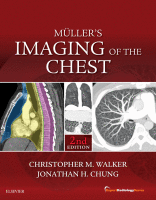Physical Address
304 North Cardinal St.
Dorchester Center, MA 02124

The chest wall is a complex anatomic structure composed of muscles, bones, joints, and soft tissues that make up the area of the body between the neck and the abdomen. Pathologic processes that may involve the chest wall include congenital…

Abnormalities of Diaphragmatic Motion: Diaphragmatic Paralysis, Weakness, and Eventration Etiology, Prevalence, and Epidemiology The diaphragm is the primary muscle of ventilation, and dysfunction of the diaphragm is an underrecognized cause of dyspnea. Dysfunction of the diaphragm can be classified as…

Mediastinal masses are relatively uncommon and include a wide variety of abnormalities of neoplastic, congenital, vascular, and lymphatic etiology that most radiologists encounter infrequently. Imaging plays a critical role in the identification and evaluation of mediastinal lesions, facilitating the formulation…

Mediastinitis refers to a focal or diffuse inflammation of the tissues located in the mediastinum. The mediastinum lies between the right and left pleural cavities and extends from the thoracic inlet to the diaphragm. Mediastinitis can be classified into acute…

Etiology, Prevalence, and Epidemiology Pneumomediastinum, also known as mediastinal emphysema, refers to the presence of free air or other gas in the mediastinal space. Pathologically, the major sources of entry of air to the mediastinum are (1) through the skin…

The pleura may be affected by primary neoplasms or become involved by secondary spread of intrathoracic or extrathoracic tumors. Primary pleural tumors account for approximately 10% of all pleural neoplasms, the most common of which include malignant pleural mesothelioma (MPM)…

Etiology Benign pleural thickening caused by fibrosis is the second most common pleural abnormality, the most common one being effusion. Pleural fibrosis has a number of causes and is the outcome of many pleural diseases and a potential complication of…

Etiology, Prevalence, and Epidemiology Pleural effusion is the accumulation of fluid in the pleural space resulting from disruption of the homeostatic forces responsible for the movement of pleural fluid. Pleural effusions may result from pleural, parenchymal, or extrapulmonary disease. Approximately…

Pneumothorax is the presence of air between the parietal and visceral pleura in the pleural cavity. It is caused most frequently by trauma or blunt or penetrating injury, which may be accidental or iatrogenic. If it is not caused by…

Lung Transplantation Complications Lung transplantation can prolong life in a variety of diseases that cause progressive respiratory failure. As of 2015, more than 55,000 adult lung transplantations and almost 4000 heart-lung transplantations had been performed worldwide, more than 3500 a…